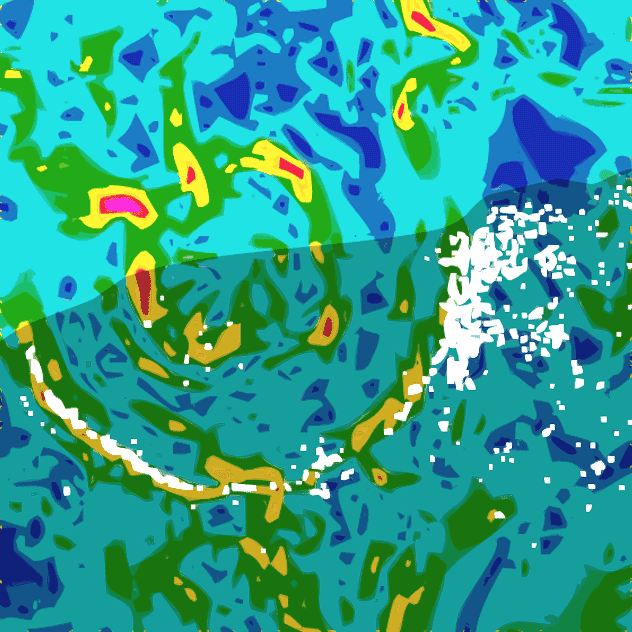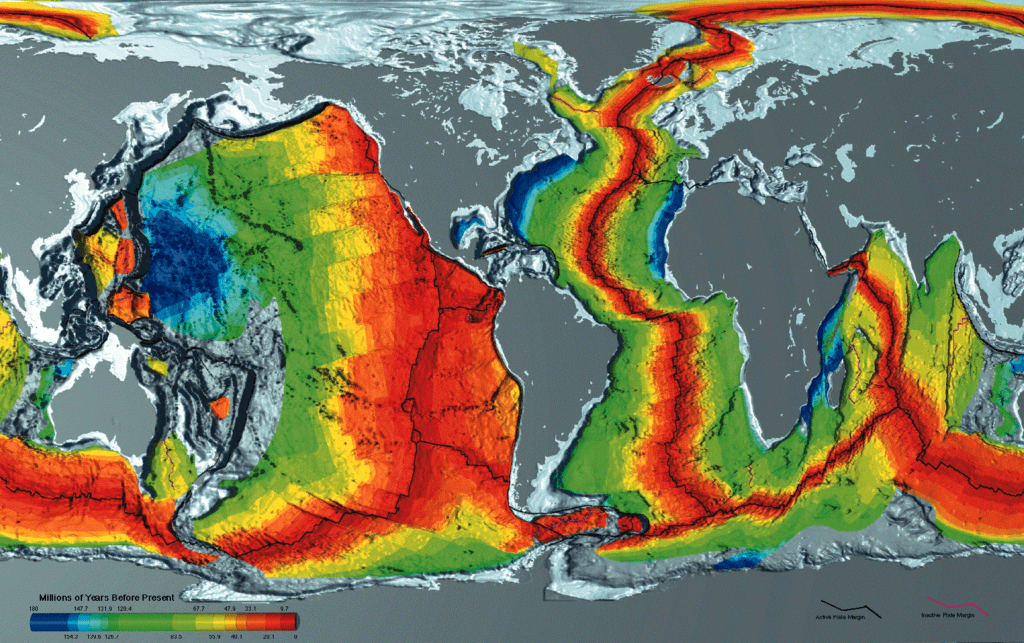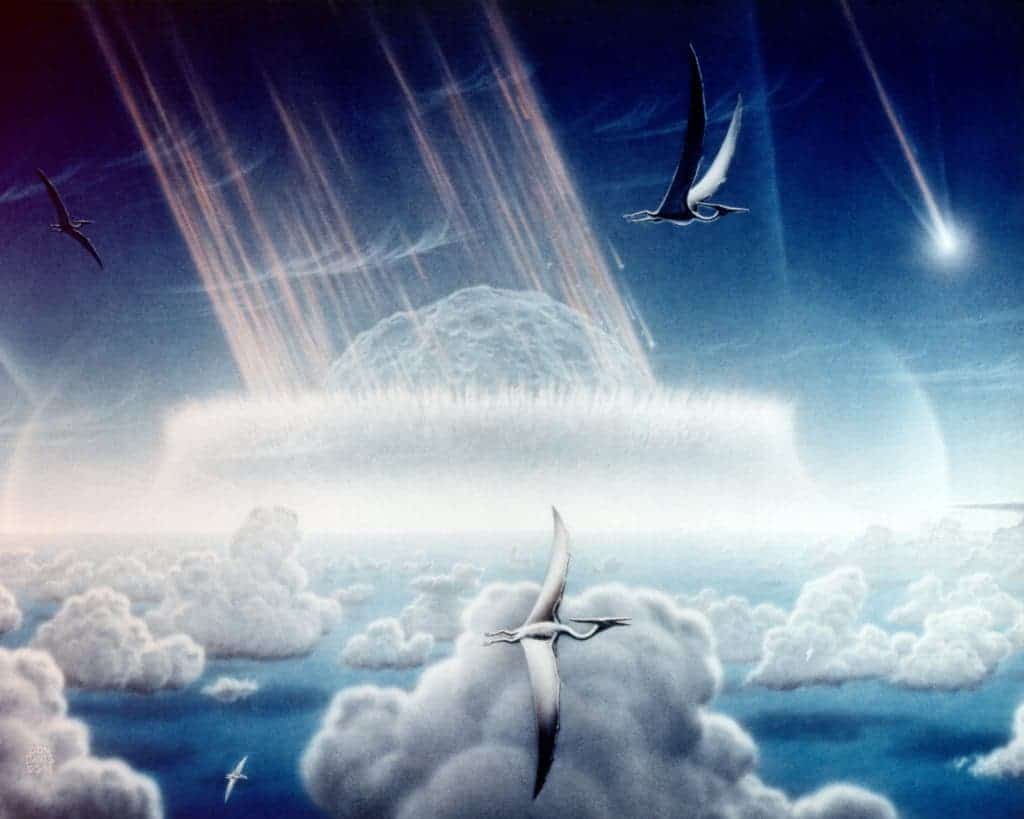New evidence suggests that both a meteorite and massive volcano eruptions worked together to wipe out the dinosaurs.
An apocalyptic impact
Dinosaurs ruled the planet for over a hundred million years, but their reign came to an abrupt end some 66 million years ago, at the end of the Cretaceous. The most popular theory, and the one with the most evidence to back it is that this abrupt end was brought about by a massive asteroid or a comet — the crater of which we call Chicxulub.

Chicxulub lies underneath the Yucatán Peninsula in Mexico, hidden to the naked eye, visible only through geophysical techniques. The crater, which measures 150 kilometers (93 miles) in diameter and 20 km (12 mi) in depth, indicates an apocalyptic impact. Geologists estimate that the impact had the energy of 10 billion Hiroshima A-bombs, millions of times more powerful than any object mankind has ever detonated. Words can’t do this event justice.
A cloud of super-heated dust, ash and steam spread from the crater at dramatic speeds, as the impact body burrowed underground in less than a second. Virtually all life 5,000 km away was wiped instantly. But the worst was still yet to come.
The impact triggered a massive emission of dust and particles which covered the entire surface of the Earth for several years, possibly a decade, creating a harsh environment for living things. Initially, the shock destruction of carbonate rocks led to a sudden and powerful greenhouse effect, heating the planet. But as time went on, the dust particles blocked the sunlight from reaching the surface of the Earth, cooling the surface dramatically.
To top it all off, the impact generated ungodly shockwaves, which in turn caused earthquakes and caused volcanic activity. This is where the new study comes in.
A one-two punch

As if all that wasn’t enough, the impact also triggered volcanic activity which helped seal the dinosaurs’ fate.
“We found evidence for a previously unknown period of globally heighted volcanic activity during the mass-extinction event,” said former UO doctoral student Joseph Byrnes.
Byrnes and Leif Karlstrom, a professor in the UO’s Department of Earth Sciences, analyzed a record of volcanism preserved along the mid-ocean ridges — underwater mountain system formed at the edge of tectonic plates.
In order to assess the volcanic activity, they used a geophysical technique called gravity surveying. This approach involves measuring the Earth’s gravitational field using highly sensitive instruments, capable of picking up even minute differences. In this instance, researchers used freely available satellite data.
By mapping the gravity field, they are able to deduct the density of the underlying rocks and thus, they have some information as to what kind of rock they’re looking at (for instance, a volcanic basalt will have a much higher density than a sedimentary limestone). This allows them to identify volcanic regions, and improved dating methods allowed them to place the increased volcanic activity right at the same time as Chicxulub, establishing a strong correlation.
“Our work suggests a connection between these exceedingly rare and catastrophic events, distributed over the entire planet,” Karlstrom said. “The meteorite’s impact may have influenced volcanic eruptions that were already going on, making for a one-two punch.”
So, researchers conclude, it wasn’t the impact itself that wiped out the dinosaurs, but rather a cascade of effects, including massive eruptions of underwater volcanoes. It’s another important reminder that the Earth is a tightly-knit ecosystem, and severe events tend to propagate all around the planet.
However, perhaps it’s important to note that through this catastrophe, and a few similarly devastating events, life still managed to find a way. Dinosaurs themselves, despite popular knowledge, are not exactly extinct. In a way, they’re thriving — as birds. A group of dinosaurs evolved and adapted, becoming the birds we see all around us.

Journal Reference: Joseph S. Byrnes, Leif Karlstrom. Anomalous K-Pg–aged seafloor attributed to impact-induced mid-ocean ridge magmatism. DOI: 10.1126/sciadv.aao2994


